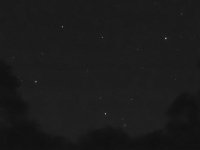salukfan111
Senior Member
1. shoot off tripodHi all I have some amazing photos of the moon and some average photos of stars. I understand this camera is not primarily set up for astrophotography but I am sure that it can take better photos of stars than I currently am. What would be your recommendation for settings?
Sent from my SM-G900I using Tapatalk
2. shoot manual
3. use 500 (600) rule. Your built in crop factor might mess you up. Shoot with increasing exposure length to see when the stair trails start and cut that in half. Use that cut in half number to figure what number to divide your focal length into.
4. use prime lens (nikkor 20 f/1.8 set a little lower than 1.8 is really good but there are better - I've found a Tamron 15-30 f/2.8 at 15mm almost as good as nikkor 20mm f/1.8). If you're stuck with some sort of zoom set at minimum.
5. use a high iso (as high as you can). If there is too much ambient light keep your exposure long and reduce iso until the results are exceptable. Your camera will have a iso limit where going above will have a bad effect.
6. use a shutter release.
7. set color temp around 3800-4000K
Dark Sky Finder (there will be a simliar site for your area) dark green will produce acceptable result but blue and gray are what you are really after.

